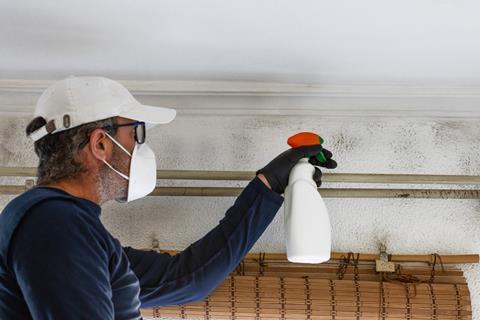Social landlords from today must address emergency damp and mould hazards within 24 hours of reporting
The first phase of Awaab’s Law has today (27th) come into force.

Social landlords will now be legally required to address all emergency hazards and damp and mould hazards that present a significant risk of harm to tenants within 24 hours of reporting.
They must also investigate significant damp and mould within 10 working days of being notified and then make properties safe in five working days. For both types of hazards, they must also write the findings to tenants within three working days of inspection.
As part of the reforms, registered providers must also consider the circumstances of residents which could put them at risk - including young children and those with disabilities or health conditions. Alternative accommodation must be offered if homes cannot be made safe within the required timeframes.
Those who fail to comply with Awaab’s Law risk being found in breach of the Social Housing (Regulation) Act 2023 by the courts. If found to be in breach a court can order the provider to do the repairs, pay costs or pay compensation to the resident.
Steve Reed, housing secretary said: “Everyone deserves a safe and decent home to live in and Awaab Ishak is a powerful reminder of how this can sadly be a matter of life or death.
“Awaab’s family has fought hard for change and their work to protect millions of tenants’ lives will live on as a legacy to their son. Our changes will give tenants a stronger voice and force landlords to act urgently when lives are at risk, ensuring such tragedies are never repeated.”
>>See also: Is the social housing sector ready for Awaab’s Law?
Phase two of the legislation will be introduced in October 2026, where requirements will extend to include the following hazards where they present a significant risk of harm:
- Excess cold and excess heat
- Falls associated with baths etc, on level surfaces, on stairs and between levels
- Structural collapse and explosions
- Fire and electrical hazards
- Domestic and personal hygiene and food safety
Phase three will come into force in October 2027 to cover all remaining housing, health and safety rating system hazards (apart from overcrowding) where they present a significant risk of harm. There are 29 hazards altogether, including asbestos, lead, radiation and noise.
Awaab’s Law has been implemented into the legal system after toddler Awaab Ishak died from prolonged damp and mould exposure in a Rochdale Boroughwide Housing home in December 2020.
The Regulator of Social Housing said it will consider landlords’ compliance with the law when issuing regulatory gradings.
The government has also today announced a new £1 million fund to explore ”new ways of helping tenants engage with their landlords and have more influence over decisions that affect them”.
Up to £100,000 will be granted to successful bidders who propose ideas for improving communication between landlords and tenants, such as through the use of online platforms and marketing campaigns.
Government guidance on timeframes to address hazards
Landlords must:
- Investigate any potential emergency hazards and undertake relevant safety work as soon as reasonably practicable within 24 hours of becoming aware of the hazard
- Investigate any potential significant hazards within 10 working days of becoming aware of them
- Produce a written summary of investigation findings and provide this to the tenant within three working days of the conclusion of the investigation
- Undertake relevant safety work within five working days of the investigation concluding, if the investigation identifies a significant hazard
- Begin, or take steps to begin, any supplementary preventative work to prevent a significant or emergency hazard recurring within five working days of the investigation concluding, if the investigation identifies a significant or emergency hazard. If steps cannot be taken to begin work in five working days this must be done as soon as possible, and work must be physically started within 12 weeks.
- Satisfactorily complete supplementary preventative works within a reasonable time period











No comments yet